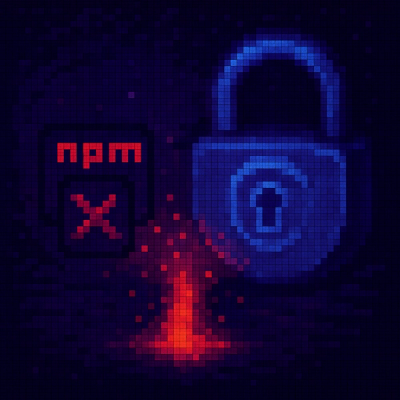
Security News
Software Engineering Daily Podcast: Feross on AI, Open Source, and Supply Chain Risk
Socket CEO Feross Aboukhadijeh joins Software Engineering Daily to discuss modern software supply chain attacks and rising AI-driven security risks.
git-profile-cli
Advanced tools
Git-Profile-cli is a CLI tool that simplifies switching between multiple Git profiles—user names, emails, and SSH keys—ideal for developers working on various projects or with multiple organizations.
git-profile-cli is a command-line tool that simplifies the management of multiple Git profiles. It allows developers to effortlessly switch between different Git configurations, including user names, email addresses, and SSH keys. This tool is perfect for developers who work on various projects or contribute to multiple organizations.
pip install git-profile-cli
Clone the repository:
git clone https://github.com/tux86/git-profile-cli.git
cd git-profile-cli
Install the package:
pip install .
After installation, you can use Git profile cli with the git-profile command:
git-profile list
git-profile current
git-profile add
You'll be prompted to enter the profile details interactively.
git-profile modify <profile_name>
git-profile [select] [profile_name]
You can use this command in several ways:
git-profile select work: Directly selects the 'work' profilegit-profile select: Prompts you to choose a profile interactivelygit-profile: Same as git-profile select, prompts you to choose a profile interactivelyExamples:
git-profile select work # Directly selects the 'work' profile
git-profile select # Prompts you to choose a profile interactively
git-profile # Also prompts you to choose a profile interactively
Note: Running git-profile without any command is equivalent to git-profile select and will prompt you to choose a profile interactively.
git-profile delete
You'll be prompted to select the profile to delete.
You can use a custom configuration file by using the --config or -c option:
git-profile -c /path/to/custom/config.yaml <command>
Git-Profile-Cli uses a YAML configuration file to store profile information. By default, it's located at ~/.git-profile/config.yaml. Each profile in the configuration file has the following structure:
profiles:
- name: work
user_name: John Doe
user_email: john.doe@company.com
ssh_key_path: ~/.ssh/id_rsa_work
- name: personal
user_name: John Doe
user_email: john.doe@gmail.com
ssh_key_path: ~/.ssh/id_rsa_personal
To set up the development environment:
python -m venv venv
source venv/bin/activate # On Windows use `venv\Scripts\activate`
pip install -r requirements.txt
To run tests, use:
python -m unittest discover tests
To build the package, use:
python -m build
Contributions are welcome! Here are some ways you can contribute to this project:
This project is licensed under the MIT License - see the LICENSE file for details.
FAQs
Git-Profile-cli is a CLI tool that simplifies switching between multiple Git profiles—user names, emails, and SSH keys—ideal for developers working on various projects or with multiple organizations.
We found that git-profile-cli demonstrated a healthy version release cadence and project activity because the last version was released less than a year ago. It has 1 open source maintainer collaborating on the project.
Did you know?

Socket for GitHub automatically highlights issues in each pull request and monitors the health of all your open source dependencies. Discover the contents of your packages and block harmful activity before you install or update your dependencies.

Security News
Socket CEO Feross Aboukhadijeh joins Software Engineering Daily to discuss modern software supply chain attacks and rising AI-driven security risks.

Security News
GitHub has revoked npm classic tokens for publishing; maintainers must migrate, but OpenJS warns OIDC trusted publishing still has risky gaps for critical projects.

Security News
Rust’s crates.io team is advancing an RFC to add a Security tab that surfaces RustSec vulnerability and unsoundness advisories directly on crate pages.